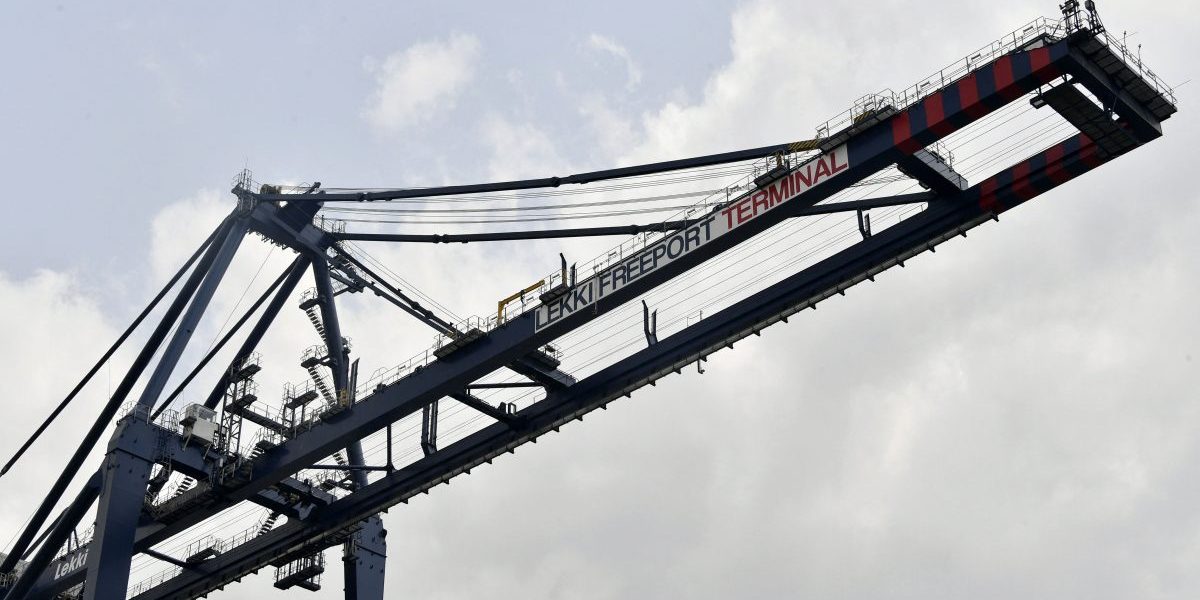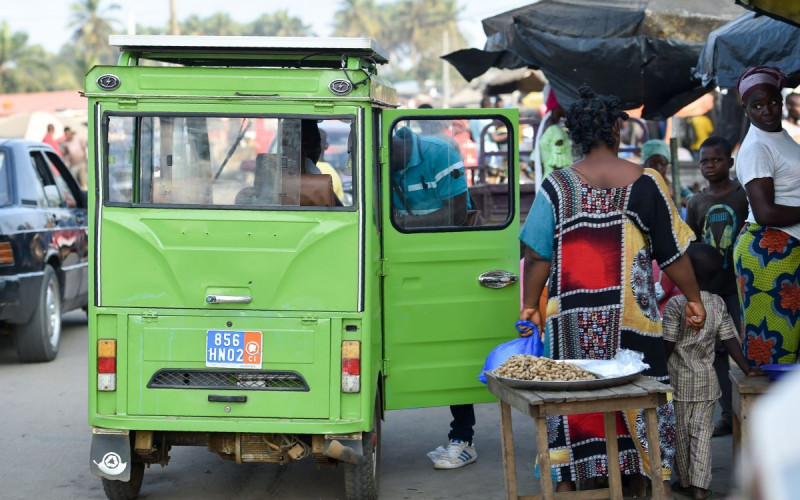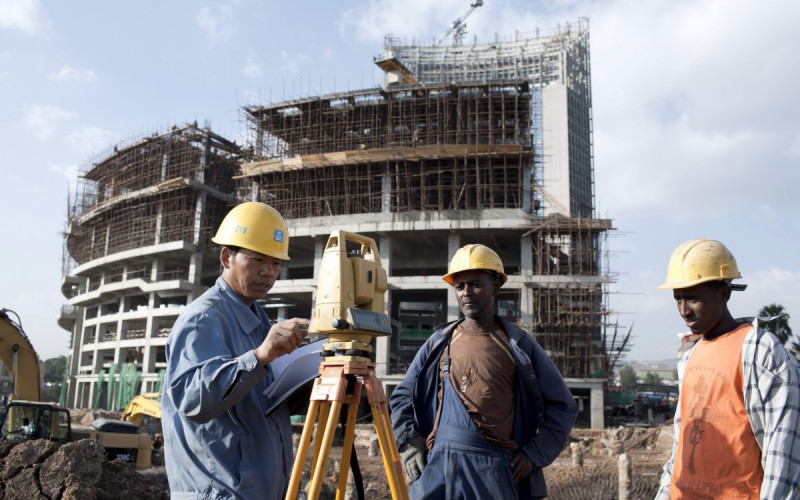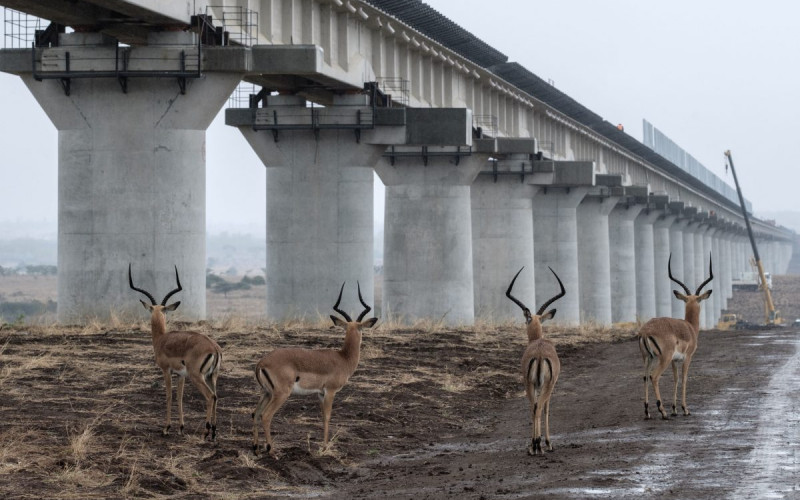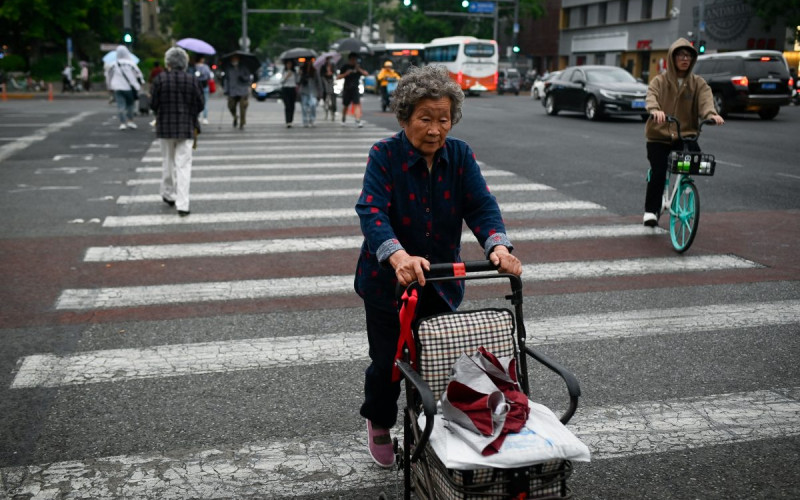Trends identified
- Trend 1: Diversifying partners and functions
While only three Chinese lenders extended most African loans two decades ago, this number has since increased tenfold. This expansion, while adding complexity to debt renegotiation processes, has also given recipient countries more options.
- Trend 2: Small is beautiful
‘Small is beautiful’, a phrase becoming popular in Chinese official language regarding its focus on Africa, means that projects are increasingly being financed with smaller loans and shorter repayment windows.
- Trend 3: New funding models
Chinese companies are becoming involved in sectors other than engineering, procurement and construction, while African countries are becoming more interested in infrastructure models not solely supported by sovereign debt. The two most popular models are build–operate–transfer and integrated investment, construction and operation.
Executive summary
China has emerged as a key funder and builder of infrastructure in the Global South. While this has sparked development, concern about the debt impact of these projects has grown in China and around the world. This policy brief maps key trends emerging in response to this dilemma. It first looks at the expansion and contraction of Chinese infrastructure finance to Africa and provides some background on the sharp decline in Chinese lending over the past few years. Then it highlights three emerging trends driven by both Chinese and African stakeholders: a diversification of partners, a focus on smaller projects and the emergence of new funding models.
Introduction
Over the past two decades, China has emerged as a major lender to the Global South. From 2000 to 2019, China is estimated to have extended about $153 billion in financing to African countries alone.1Kevin Acker and Deborah Brautigam, “Twenty Years of Data on China’s Africa Lending” (Briefing Paper 4, China Africa Research Initiative, Washington DC, 2021). Much of this was in the form of loans, in order to build infrastructure.
The resulting building boom has transformed African skylines. Many of the projects have also shown clear developmental benefits.2World Bank, “Economic Effects of BRI Infrastructure”, in Belt and Road Economics, Report (New York: World Bank, 2019). Rail networks have significantly shortened travel times between major cities, while special economic zones, data networks and ports have all opened up new commercial opportunities for African and Global South countries.
However, because the majority of Chinese financing is in the form of loans, the rapid increase in financing has also added to debt loads across the Global South. In addition, during the same era, lending at commercial rates by private investment funds and bondholders based mostly in Western countries has ballooned.3Misheck Mutize, “African Governments Have Developed a Taste for Eurobonds: Why It’s Dangerous”, The Conversation, August 5, 2021. The global economic disruptions of the COVID-19 pandemic and the war in Ukraine have helped to push some overleveraged countries into debt distress.
Some Chinese projects have also demonstrated concerning environmental, social and governance (ESG) impacts. From 2020–2022, the South African Institute for International Affairs undertook a comparative research project looking at the implementation of ESG standards in Chinese projects in Africa and Southeast Asia.4Research outputs from this project can be found at SAIIA, “China Infrastructure Cooperation”, https://saiia.org.za/tag/china-infrastructure-cooperation/ The results pointed at several shared problems, including high levels of government secrecy, questions about the longterm sustainability of certain projects and problematic dynamics between recipient country officials and Chinese contractors.
Comparing African and Southeast Asian cases allowed us to track shared trends that point to the future of Chinese infrastructure provision across the Global South. In this policy brief, we provide some background information on changing patterns in Chinese lending. We then hone in on three key trends emerging from this background: the diversifying of partners, a move towards smaller projects, and the shift towards new project funding models.
Background: Changes in Chinese funding
From 2008–2021, Chinese international financing institutions extended $498 billion in loans, almost rivalling (at 83%) the World Bank’s $601 billion during the same era.5Rebecca Ray, “‘Small Is Beautiful’: A New Era for Chinese Overseas Development Finance?” (GCI Policy Brief 017, Boston University Global Development Policy Center, Boston, January 2023). Chinese lending to Africa reached a peak in 2016 and has rapidly declined since then.6Alex Vines, Creon Butler and Yu Jie, “The Response to Debt Distress in Africa and the Role of China”, Chatham House, December 15, 2022. This trend has accelerated as a result of the economic shocks of the early 2020s. Boston University’s Global Development Policy Center, one of the world’s foremost databases on Chinese lending, showed that in 2022 China only extended $10.5 billion in loans, for 28 separate projects.
This represents a major reduction since the mid-2010s, when financing peaked at about $80 billion for 150 projects.7Ray, “‘Small Is Beautiful’”.
A few key factors contributed to this trend. First, the debt load and economic sustainability of prominent Belt and Road Initiative (BRI) projects such as Kenya’s Standard Gauge Railway (SGR) became increasingly controversial.8See, for example, Abdi Latif Dahir, “‘Jewel in the Crown of Corruption’: The Troubles of Kenya’s China-Funded Train”, New York Times, August 7, 2022. This in turn raised concern among Chinese lenders about the possible impacts of large-scale lending.9Elliot Wilson, “China: End of the Belt and Road?”, Euromoney, June 4, 2020. Second, China’s economy contracted owing to several factors, including a property financing bubble, a rapidly aging population, and larger-scale adjustments from an export to a consumption economy. The economic impacts of the global pandemic and China’s zero-COVID policies, which caused widespread supply chain disruptions, contributed to a more cautious approach to overseas lending, especially to high-risk countries.
The global pandemic and the Ukraine crisis also impacted Global South countries by driving up import prices, blocking tourism and remittances, and driving up interest rates. The result has been growing debt distress, with Zambia becoming the first African country to default on its loans. Since then, China has become involved in contentious debt renegotiation processes involving Zambia and Sri Lanka, with several more countries in debt distress.
All of these factors have increased the financial pressure on China’s policy banks, and they have responded by curtailing lending sharply. However, this reduction in funding has not reduced demand in Africa and other parts of the Global South for infrastructure. Nor has it lessened the need for Chinese companies to find new overseas markets, especially in the face of geopolitical pressure on key Chinese companies such as telecoms giant Huawei in Global North markets.10Greg Noone, “How Huawei Is Winning Over the Global South”, TechMonitor, December 22, 2022. The result of all of these trends is new approaches in Chinese project finance and implementation, jointly developed between various Chinese and Global South actors. Below we identify three such trends.
Trend 1: Diversifying partners and functions
The rapid expansion of Africa–China economic relations coincided with the global expansion of Chinese economic and investment actors. In 2000 the bulk of African lending was extended by three Chinese lenders. By 2019 this number had increased tenfold.11Zainab Usman, “What Do We Know About Chinese Lending in Africa?”, Carnegie Endowment for International Peace, June 2, 2021. This expansion added complexity to debt renegotiation processes,12Deborah Brautigam, “How Zambia and China Co-Created a Debt ‘Tragedy of the Commons’” (Working Paper 51, China-Africa Research Initiative, Washington DC, September 2021). but also widened the options open to recipient countries. This expansion coincided with growing interest from other transnational infrastructure partners such as Turkey and the United Arab Emirates, and the rise of counter-BRI initiatives such as the US-led Partnership for Global Infrastructure and Investment and the EU’s Global Gateway.
This diversification of actors on the supply side overlapped with some African policymakers seemingly taking lessons from troubled deals, such as that for Kenya’s SGR. In that case, high levels of secrecy enabled corruption involving the Kenyan government and Chinese contractors. At the same time, the project generated a significant debt load with a complicated path to profitability.13Dahir, “‘Jewel in the Crown’”. A high level of opacity also allowed a problematic overlap of interests. For example, the SGR’s environmental impact assessment was conducted by the contractor (China Road and Bridge Corporation [CRBC]) – a clear conflict of interest.14Vincent Achuka, “Bloated Costs and Other Shady Moves Behind SGR Deal Secrecy”, The Citizen, November 11, 2022.
All these factors have encouraged a broadening in the range of partners in some African projects. For example, Tanzania originally planned to follow the route of Kenya and Ethiopia’s SGRs, which were built by Chinese contractors with Chinese policy bank financing. However, this deal fell apart owing to allegations of corruption involving China Railway Materials, the original contractor.15AidData, “Project ID: 52354”, https://china.aiddata.org/projects/52354/. Instead, the project was redesigned and is now supported by non-Chinese funding. In addition, the network was divided into sections, with each assigned to a different contractor.16Sinan Tavsan, “Turkish Builder Seals $1.9bn Deal to Extend Tanzania Railway”, Nikkei Asia, December 29, 2021; “Tanzania Signs $1.46 Billion Loan for Standard Gauge Railway Construction”, Reuters, February 14, 2020. The companies involved include the China Civil Engineering Construction Corporation (CCECC) and China Railway Construction Company (CRCC), as well as the Turkish company Yapı Merkezi and the Chinese-Portuguese company Mota-Engil.17TanzaniaInvest, “SGR Tanzania Standard Gauge Railway”, January 20, 2023.
In the same vein, Namibia is currently refurbishing a regional rail network, with two sections being handled by two sets of Chinese contractors – China Gezhouba Group Corporation, and Qingjian Group with Unik Construction Engineering. The financing is also both non-Chinese and diversified, mixing domestic lending with financing from the African Development Bank.18Simon Artymiuk, “CGGC Completes 105.7km Line Upgrade in Namibia”, International Railway Journal, February 3, 2023.
Trend 2: Small is beautiful
At the third BRI Symposium in November 2021, Chinese President Xi Jinping announced new policy directions for his signature initiative. One of the directives echoed the funding pullback detailed above, calling for smaller projects with shorter repayment windows. 19Ye Yu, “Making the Belt and Road Initiative ‘Small and Beautiful’”, East Asia Forum, May 24, 2022. Since then, the shorthand ‘small is beautiful’ has become a repeated phrase in Chinese official language regarding its focus on Africa in particular.20Jevans Nyabiage, “China Finds Small Is Beautiful for African Projects Under Belt And Road”, South China Morning Post, August 1, 2022.
The projects are typically financed with smaller loans with short repayment windows. This trend has seen average project footprints falling from 90km2 between 2013 and 2017 to 16km2 by 2021.21“Xi Jinping’s Next Overseas-Lending Revolution”, The Economist, February 22, 2023. The average deal size for construction projects also fell from $558 million in 2021 to $325 million in 2022.22Nyabiage, “China Finds Small”
In addition, the projects frequently fall in areas of strength among Chinese companies, in line with a stronger focus on public–private partnerships.23Nyabiage, “China Finds Small” Strategic economic planning by the Chinese government and competition among Chinese companies have led to high capacity in renewable energy at all levels of the value chain, as well as data, computing and connectivity. These are areas of high demand in Africa that overlap with the Xi administration’s Global Development Initiative’s focus on health, digital economies and green development. This is framed as China’s contribution to achieving the UN’s Agenda 2030.24Hoang Thi Ha, “Why Is China’s Global Development Initiative Well Received in Southeast Asia?”, Fulcrum, March 3, 2023
Trend 3: New funding models
The shift towards smaller projects and away from policy bank lending is echoed by the expansion of Chinese companies’ involvement into areas other than engineering, procurement and construction (EPC). This is echoed by African enthusiasm for infrastructure models not solely supported by sovereign debt. Two models have gained prominence.
Build–operate–transfer (BOT)
One way to reduce the sovereign debt load related to infrastructure is to expand the contractor’s role. Kenya’s Nairobi Expressway, a 26.7km bypass connecting Nairobi Westlands district to Jomo Kenyatta International Airport, is a recent experiment in this direction.
Instead of the KES25Currency code for the Kenyan shilling 70 billion (about $548 million) project being funded through a loan, the cost was assumed by CRBC (also the contractor that built it). CRBC will recoup its costs through a 27-year concession to charge tolls on the road.26Takeshi Kumon and Iori Kawate, “Kenya’s New Highway Signals Shift in China’s Lending Blitz in Africa”, Nikkei Asia, August 20,
2022Road maintenance and toll collection are to be handled by Moja Expressway Company (a CRBC subsidiary). After this period, the road will be handed over to the Kenyan government.27InVhestia, “How Viable Is the Nairobi Expressway?”, June 26, 2022
The road project has garnered sharply mixed reactions. On the positive side, the expressway has reduced travel time from central Nairobi to the airport from at least two hours to about 20 minutes. Early usage data also indicates that the expressway is used frequently, with about 31 000 cars traversing it daily in March 2022. This falls within the economic sustainability range that would allow CRBC to exit the agreement in 27 years.28InVhestia, “How Viable Is”
However, the cost of the tolls have drawn some negative reactions. Initially, the Kenyan government announced that the tolls would range from KES 100–KES 1,500 ($0.90–$13.30) but this was increased to KES 120–KES 1,800 ($1–$15.40) even before the expressway opened to public use. This reflects an unpopular reality: the toll prices are calculated in US dollars, in order to cushion the contractor against currency fluctuations.29John Mutua, “Weakening Shilling Drives Up Nairobi Expressway Toll Fee Ahead of Launch”, Business Daily, April 25, 2022.
Another criticism is that the expressway is closed to boda-bodas, the minibus taxis that fulfil an important public transport function in the Kenyan capital.30Macharia Kamau, “Expressway of Pain: Kenyans Pay the Price for Nairobi’s New Swanky Road”, The Standard, May 3, 2022 This, together with the tolls, has led to charges that the expressway is only for the elite, while the original road, which continues to function under the new, elevated expressway, is for ordinary citizens.31See, for example, Msingathi Sipuka, “Taking a Toll – Lessons from Nairobi’s Expressway”, AllAfrica.com, February 2, 2023. An early drainage design flaw that saw rainwater pouring down on the road below from the elevated expressway compounded the symbolism. In January 2023 the government announced that the old Mombasa Road below would also be refurbished, partly to make up for damage caused during the expressway’s construction.32Dominic Omondi, “KeNHA to Upgrade Mombasa Road to Expressway Standard in Sh24.8bn Plan”, Business Daily, February 7, 2023.
Integrated investment, construction and operation (IICO)
A second model to avoid large increases in sovereign debt is where infrastructure projects use equity investment. The most prominent example is Lekki Port, outside of Lagos, Nigeria.
The construction of a deep-sea port on the Nigerian coast was a long-held dream. It was felt it would relieve critical congestion around Lagos’s smaller ports and take advantage of Nigeria’s strategic position in the context of the African Continental Free Trade Agreement.33Lauren Johnston, “A Chinese Port in Nigeria Will Change the World Economy”, Nikkei Asia, July 15, 2022.
The deal was driven by Singapore’s Tolaram, which has been developing it since 1995. In 2012 China Harbor Engineering Company (CHEC), a veteran of African port projects and a subsidiary of the state-owned China Communications Construction Corporation, China’s largest international construction company, was identified as a contractor.34Hong Zhang, “From Contractors to Investors? Evolving Engagement of Chinese State Capital in Global Infrastructure Development and the Case of Lekki Port in Nigeria” (Working Paper 53, China-Africa Research Initiative, Johns Hopkins University, Washington
DC, January 2023).When financing fell through in 2017, the deal was redesigned to allow CHEC to take an equity stake.35Zhang, “From Contractors to Investors”.
While CHEC is one of the world’s most experienced builders of ports, it has little experience in operating ports, especially in such a complex environment as Nigeria. For this reason, the eventual agreement was that CHEC would take a minority share in the joint venture company operating the port, with an 80% stake taken by French ports operator CMA Terminals, an industry leader.36Zhang, “From Contractors to Investors”.
The model represents an evolution from BOT towards foreign direct investment (FDI). In the broader sense, it also signals a growing interest in China for Chinese firms to spearhead an expansion from exports-based to FDI-based growth. In addition, it shows that Chinese companies are responding to political pressure to grow in international prominence and to promote Chinese standards globally.37Zhang, “From Contractors to Investors”.
The IICO model increases Chinese contractors’ accountability in ensuring that projects are fully sustainable. Whereas earlier EPC models tended to focus on the delivery timeline, with broader environmental, social and governance aspects being left to the recipient government, the IICO model makes long-term sustainability part of the Chinese company’s core focus.
However, it also means these companies are taking on significantly increased financial risk. In the case of Lekki, this is exacerbated by CHEC’s relative lack of experience. While the IICO model lessens risk for African governments and Chinese state lenders, it increases risk for Chinese companies. It remains to be seen whether this increased risk will translate into profit.
Acknowledgement
SAIIA gratefully acknowledges the support of the Konrad Adenauer Stiftung for this publication.

